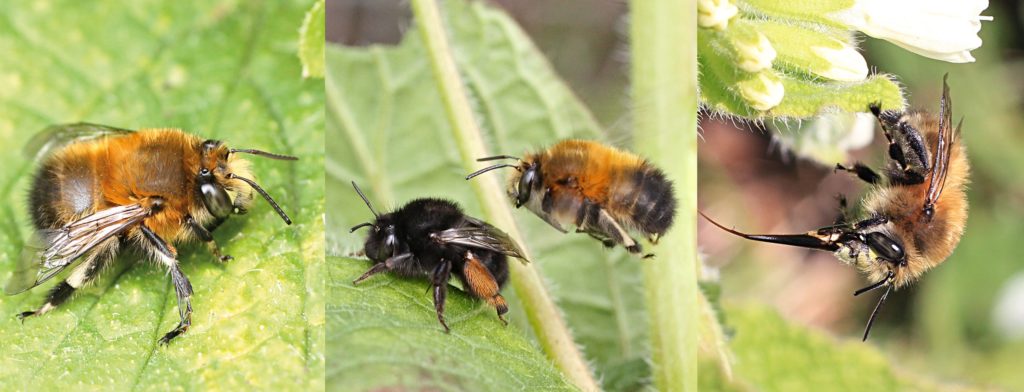09/02/2023

We have around 270 species of bee in the UK, and most don’t conform to our image of a bee: stripy, stings, makes honey and lives in a colony with a queen.
The male Hairy-footed flower bee has a fluffy brown coat, and females are jet black, save for the brown feathery hairs on their hind legs right down to their tiny feet, hence their delightful name.
While most solitary bees don’t emerge until the warmer months, their thick coats allow Hairy-footed flower bees to withstand the cold. So in late February, you’ll see males. They are easy to spot, measuring around 14mm and have a distinctive hovering and darting movement with their long tongue (proboscis) outstretched ready to reach deep into the base of a flower for a nectar hit.
They are docile bees, despite making a loud buzzing noise, and like all bees – except for one species – they don’t make honey, but are important pollinators. They also nest alone without a queen, making them what’s known as a solitary bee species.
You are also likely to see them chasing each other in a patch of flowers. It may look playful, but they are vying for control of an area where they can woo and mate with the females, when they emerge later next month.
Despite their solitary nature, Hairy-footed flower bees often nest next door to each other in large aggregations, often in holes in the mortar of outdoor walls that need repointing, or in old cob walls, or even indoors in crumbling fireplaces. If you find a nest, you’ll see and hear males darting noisily around, and in and out the holes hoping to find a female.
Once mated, females search for a new hole to make their nest and collect pollen from flowers to feed to their offspring.
Ways you can help Hairy-footed flower bees
- Plant their favourite food
- Lungwort (Pulmonaria)
- Dead-nettles (Lamium album)
- Early flowering comfrey (Symphytum iberian)
- Flowering currents (Ribes sanguineum)
- Pieris japonica
- Provide a home
As old walls get repointed, or replaced by newer buildings, hairy-footed flower bees lose their nest sites.
- You could try to make cob bricks where they may nest.
For more information about how to make cob bricks, other bees to see this month and how to help them sign up to Alison’s Buzz newsletter
Words: Alison Benjamin, Urban Bees
Photo credits: Penny Metal

